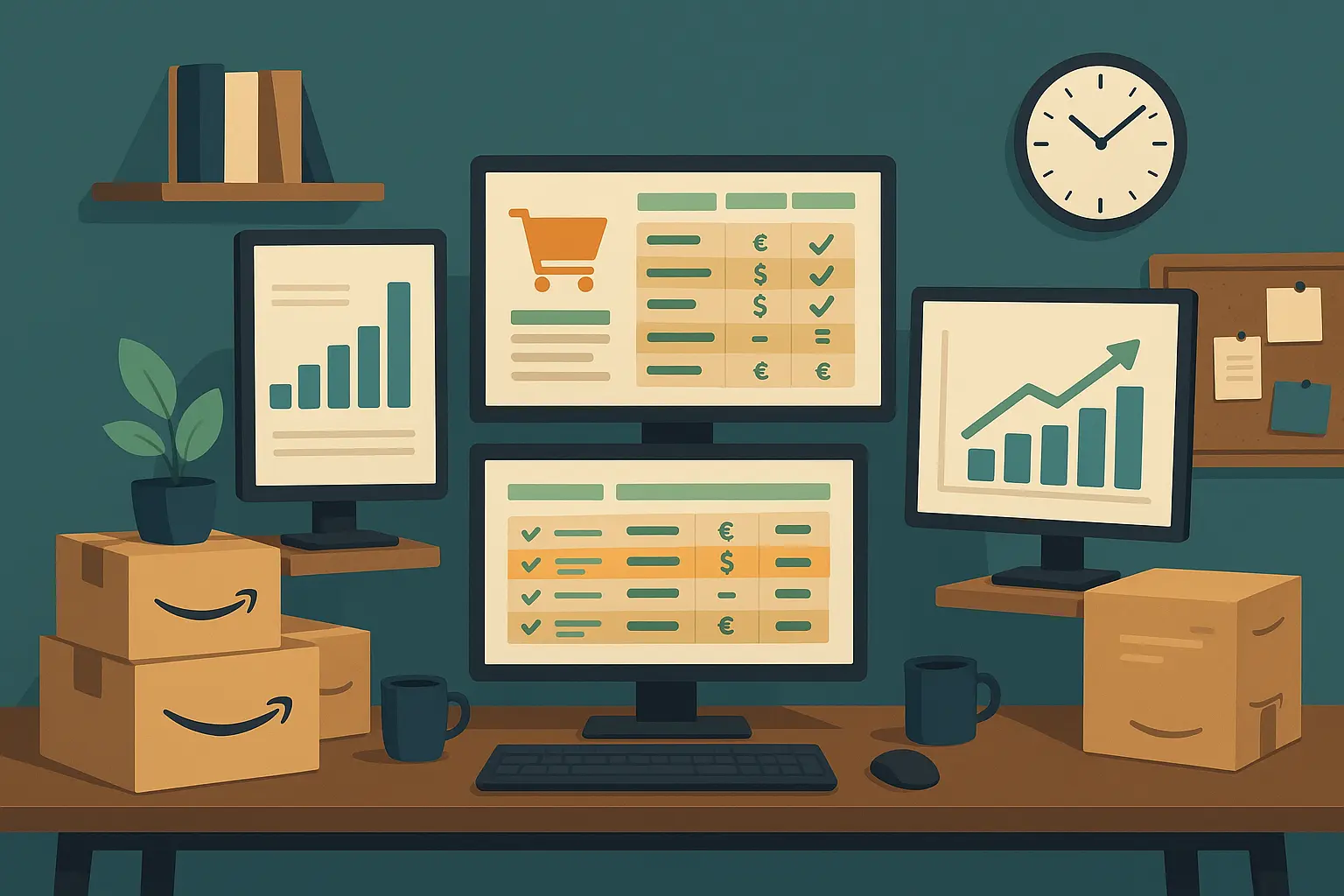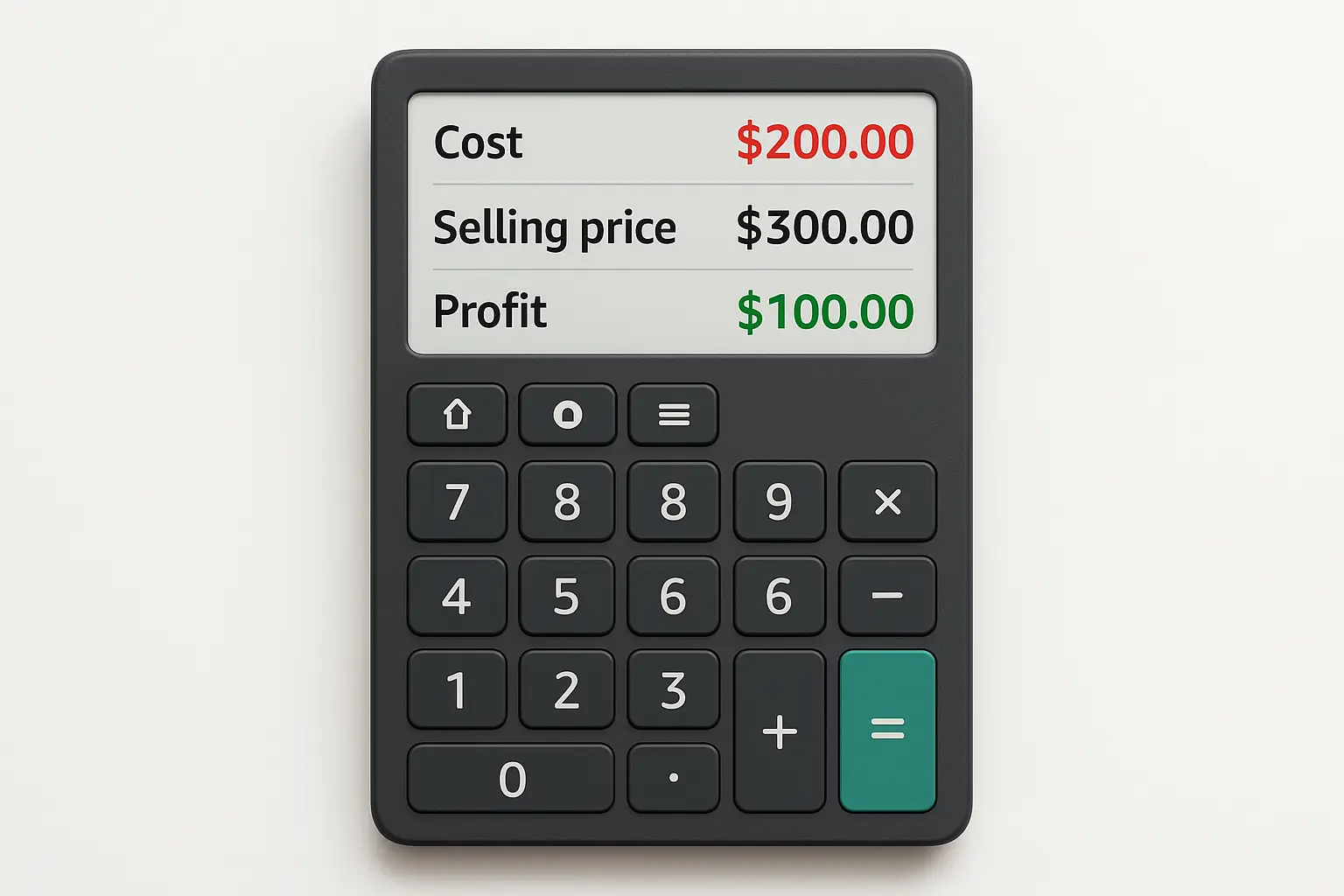
Table of Contents
-
Understanding Amazon Revenue Calculators
-
Amazon FBA Calculator Deep Dive
-
Implementation and Optimization Strategies
-
Advanced Revenue Optimization Techniques
-
How The Marketing Agency Can Maximize Your Success
-
Final Thoughts
TL;DR
-
Amazon revenue calculators aren’t just nice-to-have tools – they’re what stand between you and financial disaster
-
FBA calculators help you figure out if Amazon’s fulfillment is worth it, including those sneaky seasonal storage fees that can destroy your profits overnight
-
Your data has to be spot-on – garbage in, garbage out is painfully real with these calculations
-
The best calculators pull in real-time market data and competitive pricing so you’re not making decisions based on last month’s numbers
-
You need to check these things monthly because Amazon loves changing fees without much fanfare
-
Getting your pricing right through calculator insights can seriously boost your profits without losing your competitive edge
Understanding Amazon Revenue Calculators
I’ve watched way too many sellers jump into Amazon thinking they’ve got it all figured out, only to realize months later they’re actually losing money on every sale. An amazon revenue calculator isn’t some fancy optional tool – it’s literally your financial lifeline in a marketplace where your margins can vanish faster than you can say “referral fee.”
Here’s the thing – with Helium 10’s data showing they collect over 2+ billion data points every single day to provide accurate sales estimates, you’d think more sellers would get serious about using proper calculation tools. But most don’t, and it shows in their bank accounts.
Look, I learned this the hard way – Amazon’s fees are all over the place. Electronics? You’re looking at 8%. Jewelry? They’ll hit you for 15%. And that’s just referral fees – we haven’t even talked about fulfillment costs, storage fees, and all the other charges that add up faster than you think.
Amazon revenue calculators are basically your financial safety net. They break down every single cost that’s going to hit your bottom line – from those referral fees to storage charges you didn’t even know existed. Without them, you’re essentially flying blind, and trust me, that never ends well.
Understanding the money side of your Amazon business takes the same kind of attention to detail as mastering retail math fundamentals. Get the calculations wrong, and you’ll find out real quick in competitive markets.
The Numbers That Actually Matter (And The Ones That’ll Kill You)
Getting the basics right is what separates the sellers making money from the ones wondering where it all went wrong. I’ve seen people lose thousands because they didn’t understand what actually goes into these calculations.
Here’s the deal – a reliable Amazon revenue calculator needs to handle Amazon’s crazy fee structure and all your cost variables accurately. Miss something important, and your “profitable” product might actually be costing you money every time someone buys it.
Amazon’s Fee Structure – The Numbers That Make or Break You
Amazon’s fee structure is like a puzzle designed by someone who really doesn’t want you to understand it. Referral fees alone will make your head spin – electronics might cost you 8%, while jewelry hits you for 15%. Then you’ve got fulfillment fees that change based on how big and heavy your stuff is.
And don’t get me started on storage fees. What looks like pocket change monthly can turn into a serious expense, especially during peak season when rates basically double overnight.
Amazon’s fees form the backbone of what makes or breaks your profits. Referral fees, fulfillment charges, storage costs – they all directly impact whether you’re making money or just kidding yourself. You need to understand how these fees change based on your product category and characteristics, or you’ll constantly underestimate your real costs.
According to recent analysis, approximately 80% of adults in the United States are turning to eCommerce to buy goods and services from Influencer Marketing Hub. With that kind of competition, getting your fee calculations wrong isn’t just expensive – it’s business-ending.
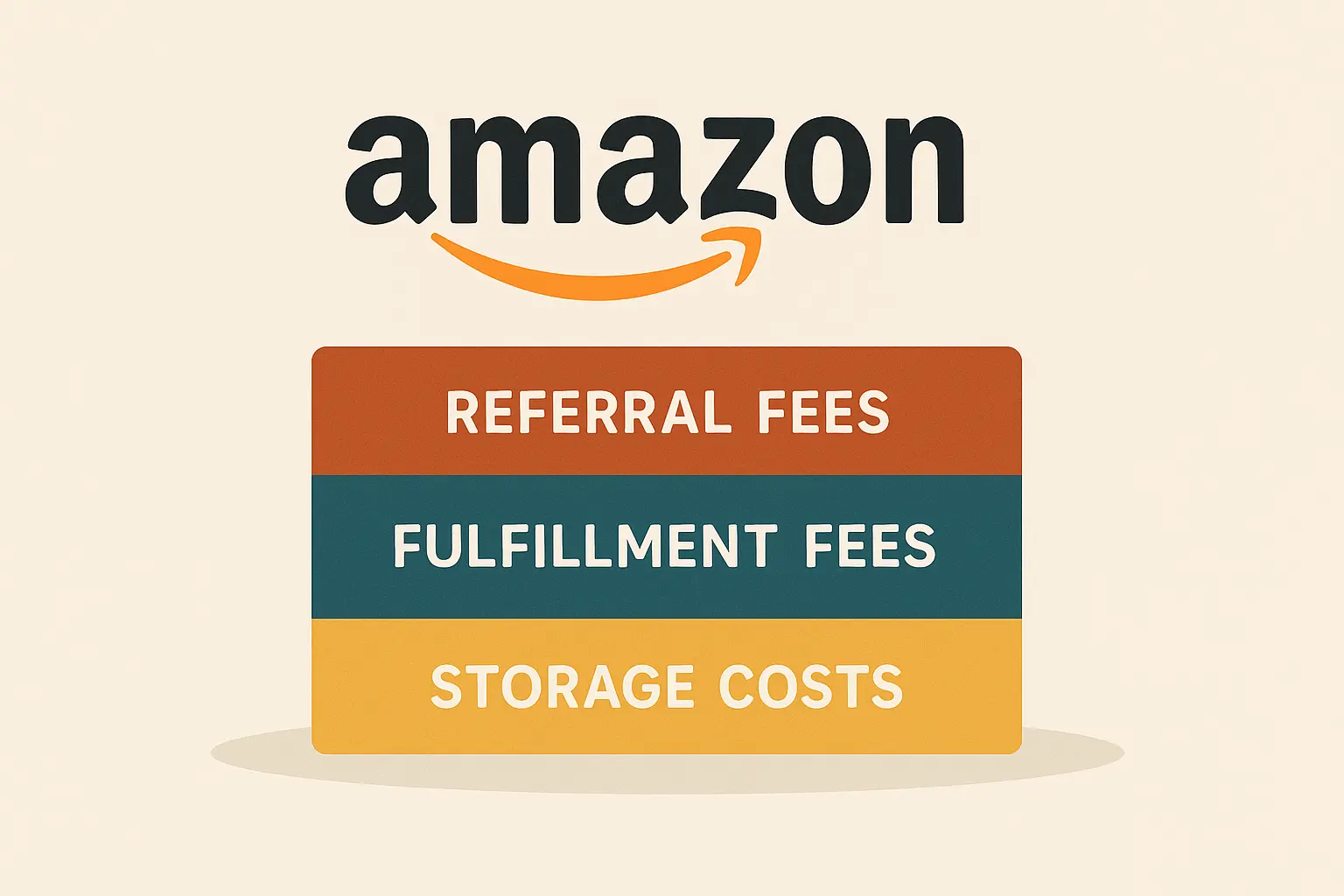
The Costs Everyone Forgets About (That’ll Bite You Later)
Here’s where most sellers mess up big time – they remember the obvious costs but completely forget about the “hidden” ones. Product cost? Sure, that’s easy. But what about shipping your stuff to Amazon’s warehouses? Packaging materials? The hours you spend managing inventory?
Your calculator is only as good as what you put into it. Miss a few cost components, and those profit projections become fantasy numbers that’ll hurt when reality hits your bank account.
Real profit calculations need to capture every expense – product costs, packaging materials, shipping to Amazon warehouses, even your time. Most sellers forget about half this stuff, which is why their profit projections look great on paper but terrible in real life.
|
Cost Component |
How Often It’s Forgotten |
Impact on Your Wallet |
|---|---|---|
|
Product Cost |
Never |
Huge |
|
Amazon Referral Fees |
Rarely |
Huge |
|
FBA Fulfillment Fees |
Sometimes |
Huge |
|
Storage Fees |
Way Too Often |
Medium |
|
Shipping to Amazon |
Almost Always |
Medium |
|
Packaging Materials |
Constantly |
Low-Medium |
|
Return Processing |
Everyone Forgets This |
Medium |
|
Advertising Costs |
Sometimes |
Depends |
How to Actually Predict Your Revenue (Without Kidding Yourself)
Basic profit margin math isn’t going to cut it anymore. The sellers who actually succeed use approaches that factor in seasonal trends, market changes, and what actually happened in their business before.
Real revenue projection goes way beyond basic math. You need to look at historical performance, market trends, and seasonal patterns. The calculators that do this give you forecasts based on reality instead of wishful thinking.
Learning From Your Past Mistakes (And Successes)
Your sales history tells a story that basic calculators completely ignore. The advanced tools pull in your actual sales data, seasonal patterns, and market trends to give you projections based on what really happened, not what you hope will happen.
I’ve found that calculators using historical data are usually 30-40% more accurate than those relying on static inputs. That accuracy translates directly into better decisions and more money in your pocket.
The calculators that actually work? They look at what happened last Christmas, last Prime Day, last back-to-school season. Static numbers are useless – your business has patterns, and smart calculators pick up on them.
Research from AMZScout indicates that “sales numbers can change daily, so you need to check each product’s sales history in order to get the whole picture”. This is exactly why you can’t just look at a snapshot and call it good.
Staying Ahead of Market Changes
Markets don’t stand still, and neither should your calculations. The professional calculators adjust for competitive pricing changes, demand shifts, and category-specific trends that can completely change your projections.
When a competitor drops their price by 20%, your sales volume changes. When demand spikes during holidays, your conversion rates improve. These factors need to be part of your calculations, or you’re making decisions based on outdated information.
Professional-grade calculators account for competitive pricing changes, demand fluctuations, and market conditions that can seriously impact your revenue. These adjustments help you see market shifts coming instead of getting blindsided by them.
Just like successful businesses need comprehensive market sizing analysis to spot growth opportunities, Amazon sellers need calculators that factor in market dynamics and competitive positioning for accurate projections.
Testing Your “What If” Scenarios Before You Commit
What if you raised prices by 10%? What if shipping costs went up? Scenario planning tools let you test these questions without risking real money, and trust me, that’s invaluable.
I use these tools constantly to model different strategies. Want to know if a price increase will actually hurt your total profits? Run the scenario first instead of finding out the expensive way.
Modern calculators let you run “what-if” scenarios for different pricing strategies, cost structures, and volume changes. This kind of analysis helps you optimize decisions by showing potential outcomes before you commit to changes.
Here’s a real example – a supplement seller used scenario planning to test a 15% price increase. Their calculator showed that while unit sales might drop 8%, total profit would increase 22% because of higher margins. That data let them make the price change confidently, knowing exactly what would happen.
The Future is Here (And It’s Connected)
The best calculators don’t just crunch numbers – they connect to live data sources. API integration with Amazon and third-party platforms means your calculations stay current without you having to manually update everything constantly.
Next-generation calculators integrate with Amazon’s API and analytics platforms to give you real-time data updates and comprehensive insights. This integration eliminates manual data entry while making sure your calculations stay current with market conditions and fee changes.
Real-Time Updates – No More Stale Numbers
Stale data kills accuracy, and accuracy kills profits. Real-time synchronization means your calculator automatically updates with current Amazon fees, market prices, and your actual costs without you lifting a finger.
This isn’t just convenient – it’s essential. Amazon updates fees regularly, and market prices shift daily. Manual updates can’t keep pace with these changes, which means you’re always working with outdated information.
Connected calculators automatically update with current Amazon fees, your real costs, and market pricing to keep calculations accurate without manual work. This real-time sync prevents costly errors from outdated information and keeps your profit projections aligned with what’s actually happening.
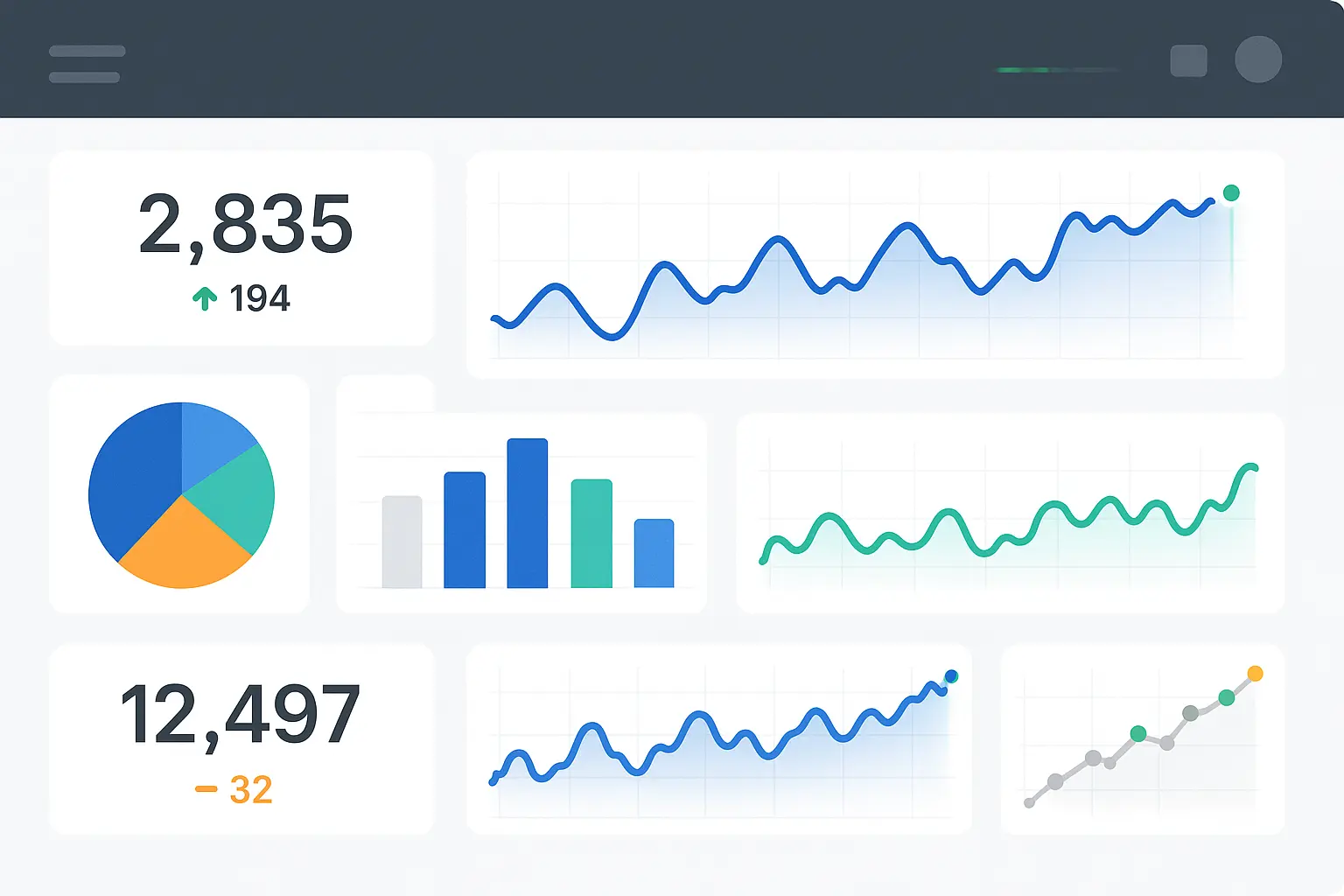
Amazon FBA Calculator Deep Dive
An amazon fba calculator deserves special attention because you’re dealing with a completely different cost structure. You’re not just calculating basic fees – you’re trying to figure out if Amazon’s fulfillment service actually makes financial sense for your products.
The FBA vs self-fulfillment decision can make or break your Amazon business. Get it wrong, and you’ll either overpay for services you don’t need or miss out on the sales boost that comes with Prime eligibility. A solid amazon fba calculator helps you make this critical decision with actual data instead of guesswork.
FBA calculators focus specifically on Amazon’s fulfillment costs and benefits, helping you figure out whether using Amazon’s warehousing and shipping makes sense compared to doing it yourself. These tools account for FBA’s unique fee structure and the real value of Prime eligibility.
FBA Fees – Where the Devil Lives in the Details
FBA fees aren’t just one simple number – they’re a complex calculation based on size tiers, weight, how long you store stuff, and special handling requirements. Miss any piece, and your profitability projections become meaningless. This is where a good amazon fba calculator becomes invaluable for breaking down these complex fee structures.
Amazon’s FBA fees include fulfillment fees based on product size and weight, monthly storage fees, and extra charges for long-term storage or special handling. Understanding these components is crucial for accurate profitability calculations and smart fulfillment decisions.
Size Tiers – Small Differences, Big Money Impact
Size tiers can absolutely destroy your FBA profitability. A product that’s just slightly too big for standard-size classification can see fulfillment fees double or triple overnight.
I’ve seen sellers completely redesign their packaging just to hit a lower size tier. Sometimes reducing package dimensions by just one inch can save $2-3 per unit in fulfillment fees. Any decent amazon fba calculator will help you model these size tier impacts before you commit to packaging decisions.
Products get categorized into standard-size, oversize, and special oversize tiers with dramatically different fee structures that can determine whether your product is profitable in the FBA program. Understanding these classifications helps you optimize packaging and product selection for better margins.
Recent industry data shows that global eCommerce sales are estimated to hit $6.3 trillion this year, with $1.1 trillion coming from the US according to Influencer Marketing Hub. With that kind of competition, getting your FBA fee calculations wrong can be business-ending.
The Holiday Storage Fee Surprise
Here’s what catches most sellers completely off guard – storage fees nearly double during Q4. What costs $0.75 per cubic foot in January jumps to $2.40 in November. Nothing prepares you for that first Q4 storage bill.
Your calculator needs to account for these seasonal spikes, especially if you’re planning to hold inventory through the holidays. That “profitable” product might become a money loser when storage fees peak.
Storage fees don’t just increase during peak seasons (October-December) – they nearly triple. Calculators must account for these fluctuations when projecting annual profitability for FBA products. These seasonal adjustments can completely change the economics of storing inventory at Amazon warehouses.
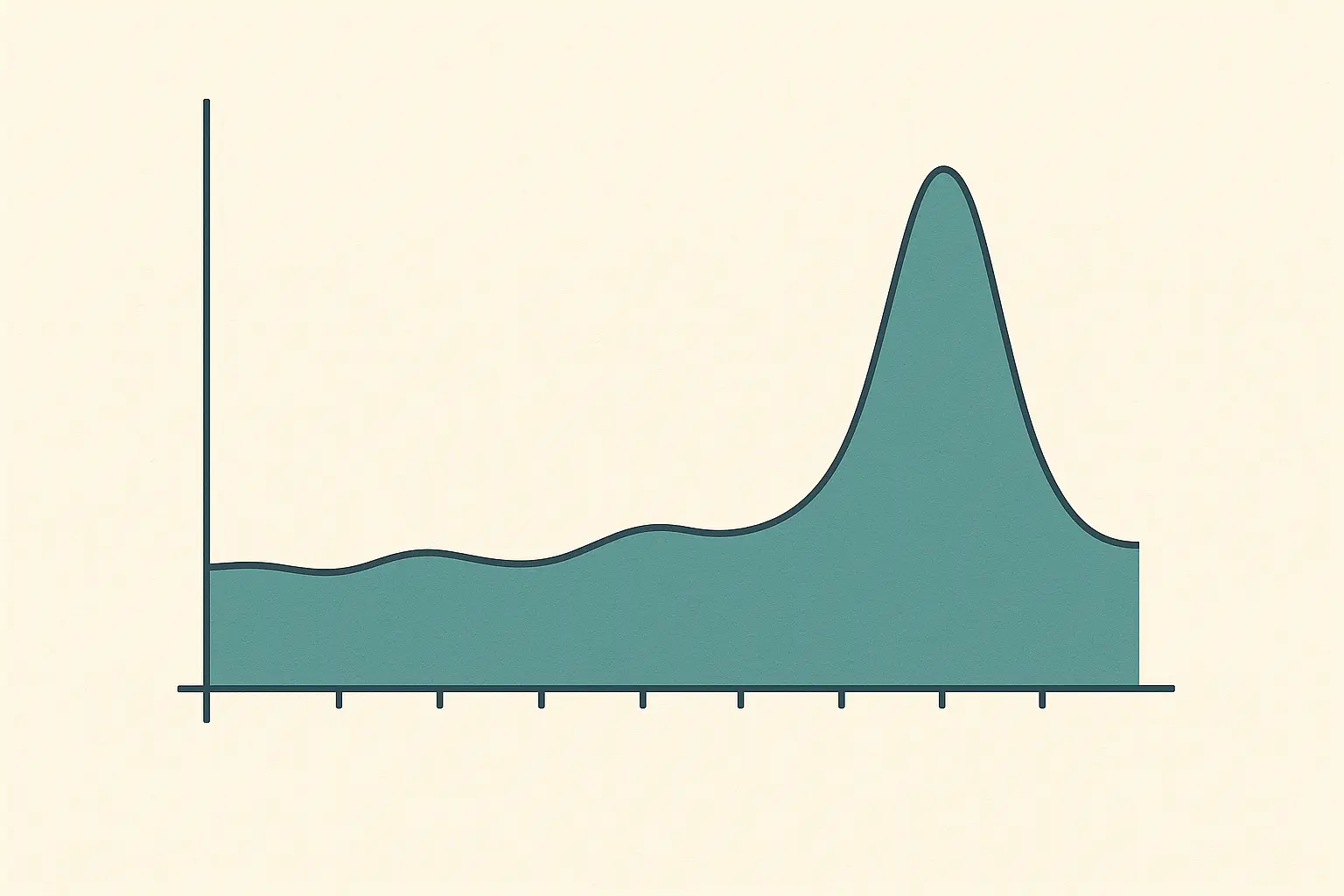
FBA vs Self-Fulfillment – The Make-or-Break Decision
The FBA vs self-fulfillment decision isn’t just about comparing shipping costs. You need to factor in customer service, returns processing, Prime eligibility benefits, and your own time investment. A comprehensive amazon fba calculator will model all these variables to give you the complete picture.
Real calculators compare the total cost of using FBA against self-fulfillment options, including hidden costs like customer service, returns processing, and the actual value of Prime eligibility. This analysis helps you make informed decisions based on your complete cost structure and business capabilities.
Finding Your Break-Even Sweet Spot
Every product has a break-even point where FBA fees become worthwhile. Low-volume products might be better self-fulfilled, while high-volume items benefit from FBA’s economies of scale.
I typically see the break-even point around 50-100 units per month, but it varies dramatically based on product size, weight, and your self-fulfillment costs. An effective amazon fba calculator will help you identify this sweet spot for each of your products.
Calculators determine the minimum sales volume needed to justify FBA fees versus self-fulfillment, helping you make smart decisions based on your projected sales velocity. This break-even analysis is crucial for products with varying sales volumes throughout the year.
According to Jungle Scout’s Consumer Trends Report, “35% of all U.S. consumers have purchased products using the Subscribe & Save option”, which is exclusively available to FBA products. This makes the break-even analysis even more critical when you consider the additional revenue potential from subscription sales.
The Prime Badge Sales Boost (It’s Real)
Prime eligibility isn’t just a nice feature – it’s a sales multiplier. Products with Prime badges typically see 10-15% higher conversion rates, sometimes way more in competitive categories.
I’ve got a buddy selling fitness equipment. Same exact product, same photos, same price. The day he switched to FBA and got that Prime badge? His conversion rate jumped from 11% to 16%. That’s not theory – that’s real money in the bank.
Advanced calculators factor this sales boost into their projections. Even if FBA costs more per unit, the increased sales volume often makes it the more profitable choice overall.
FBA products automatically qualify for Prime shipping, which can increase conversion rates by 10-15%, and advanced calculators factor this sales boost into profitability projections. This Prime eligibility often justifies higher FBA fees through increased sales volume.
A kitchen gadget seller discovered through FBA calculator analysis that while their fulfillment costs increased by $1.50 per unit with FBA, the Prime eligibility boost increased their conversion rate from 12% to 18%. The additional sales volume generated $3.20 more profit per unit, making FBA the clear winner despite higher fees.
|
FBA Benefits |
Self-Fulfillment Benefits |
|---|---|
|
Prime eligibility (10-15% conversion boost) |
Lower per-unit costs |
|
Amazon handles customer service |
Full control over packaging |
|
Automatic returns processing |
No storage fees |
|
Multi-channel fulfillment available |
No size/weight restrictions |
|
Higher search ranking potential |
Keep all customer data |
|
Subscribe & Save eligibility |
Faster time to market |
Implementation and Optimization Strategies
Having a great calculator means absolutely nothing if you don’t use it properly. Your approach to implementation determines whether these tools help or hurt your business decisions. Whether you’re using a basic fba revenue calculator amazon provides or a sophisticated third-party solution, how you use it makes all the difference.
Successfully using Amazon revenue calculators requires systematic approaches to getting your data right, keeping things updated, and actually understanding what the results mean. Implementation goes way beyond basic number crunching to include comprehensive cost tracking and regular review cycles that keep your calculations accurate over time.
Getting Your Data Right – Garbage In, Garbage Out
Your calculations are only as accurate as your data, and I’ve seen sellers make terrible decisions because they fed bad information into otherwise excellent calculators.
The accuracy of your revenue calculations depends entirely on the quality of your input data. You need systematic approaches to cost tracking and regular updates to maintain reliable projections. Poor data quality leads to flawed business decisions and missed profit opportunities.
Building Your Cost Tracking Foundation
You need systems that capture every single cost – product costs, shipping to Amazon, packaging materials, advertising spend, even overhead allocation. Miss any component, and your profit projections become complete fiction.
I recommend tracking costs in spreadsheets or accounting software that can easily export data to your calculator. Manual entry every time leads to errors and inconsistencies, and trust me, those errors add up fast.
Implementing comprehensive cost tracking that captures all expenses including product costs, shipping, packaging, advertising spend, and overhead allocation ensures accurate calculator inputs. Without systematic cost tracking, your revenue projections become unreliable and potentially misleading.
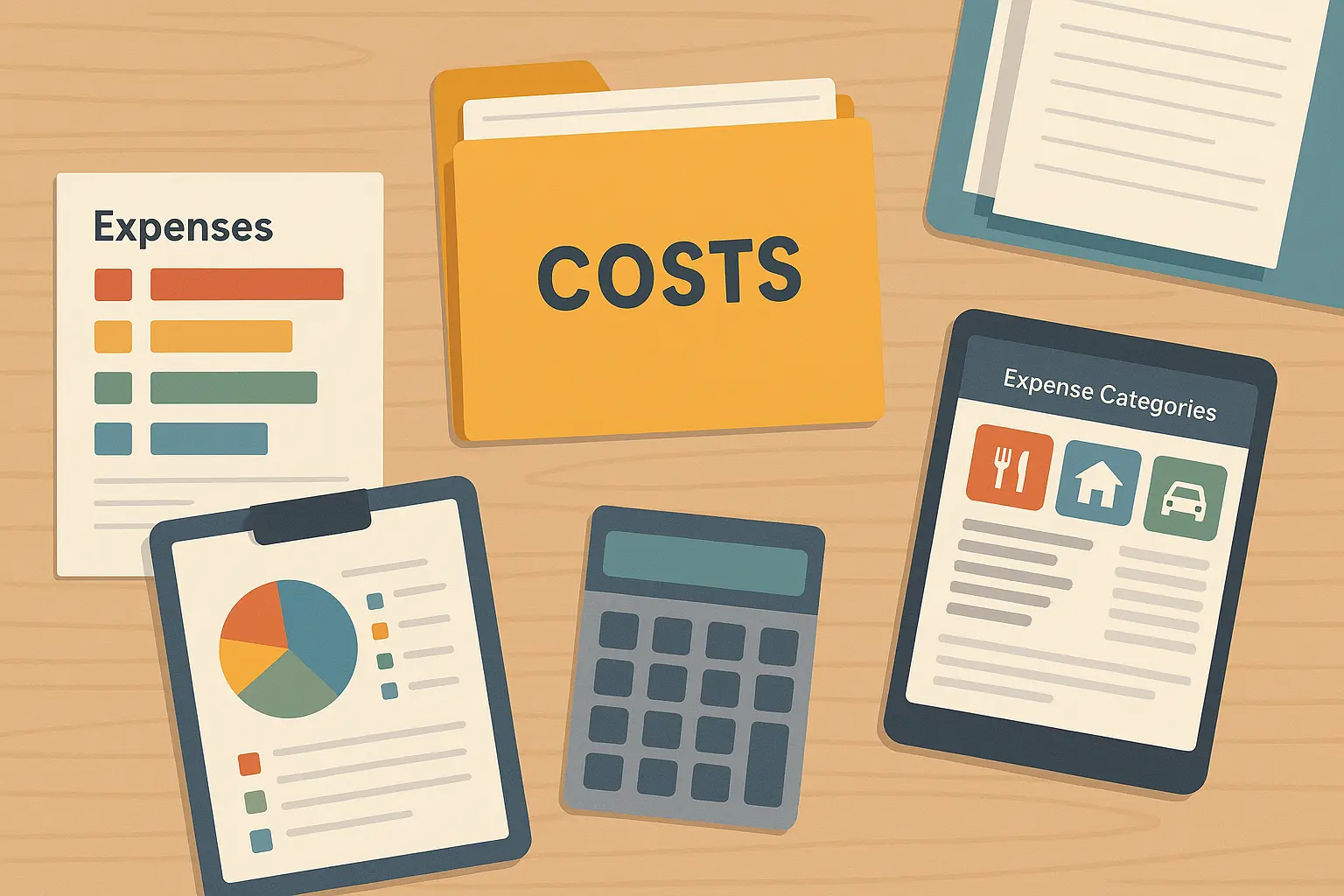
Cost Tracking Checklist:
-
Product/manufacturing costs
-
Shipping to Amazon warehouses
-
Packaging materials and design
-
Amazon referral fees (category-specific)
-
FBA fulfillment fees
-
Monthly storage fees
-
Long-term storage fees (if applicable)
-
Return processing fees
-
Advertising spend (PPC, sponsored products)
-
Photography and listing optimization
-
Inventory management software costs
-
Customer service expenses
-
Overhead allocation (utilities, office space)
Staying Current – Why Monthly Reviews Are Non-Negotiable
Here’s something I wish someone had told me earlier – you can’t just set up your calculator once and forget about it. Amazon changes their fees constantly (usually without much fanfare), and what looked profitable last month might be bleeding money today.
Revenue calculations should be updated regularly to reflect changing market conditions, Amazon fee adjustments, and evolving cost structures for maintaining accurate business insights. Regular updates prevent costly decisions based on outdated information.
Making Monthly Reviews Routine
Monthly reviews should be absolutely non-negotiable. Compare your projections against actual performance, identify trends, and adjust your strategies based on what the data reveals.
These reviews often uncover opportunities you’d otherwise miss. Maybe a product’s profitability improved due to reduced competition, or storage fees are eating into margins more than expected. Your amazon fba calculator becomes a strategic tool rather than just a one-time analysis when you use it consistently.
Establishing monthly calculation reviews helps identify trends, validate projections against actual performance, and adjust strategies based on calculator insights and market changes. These regular reviews turn calculators from static tools into dynamic business intelligence systems.
Regular performance reviews require the same systematic approach as conducting comprehensive GA4 audits, where consistent monitoring and analysis reveal optimization opportunities that drive better business outcomes.
Watching for Fee Changes (Before They Kill Your Profits)
Amazon loves to slip fee changes into their announcements like they’re doing you a favor. I once missed a fulfillment fee increase and didn’t realize it for two months. Cost me about $1,800 in profits I thought I was making but wasn’t.
Set up alerts for Amazon’s fee schedule updates, and review your calculations immediately when changes occur. A small fee increase can turn profitable products into losers overnight.
Amazon periodically updates its fee structure, and successful sellers monitor these changes closely to update their calculators and maintain accurate profitability projections. Fee changes can significantly impact product economics and require immediate attention.
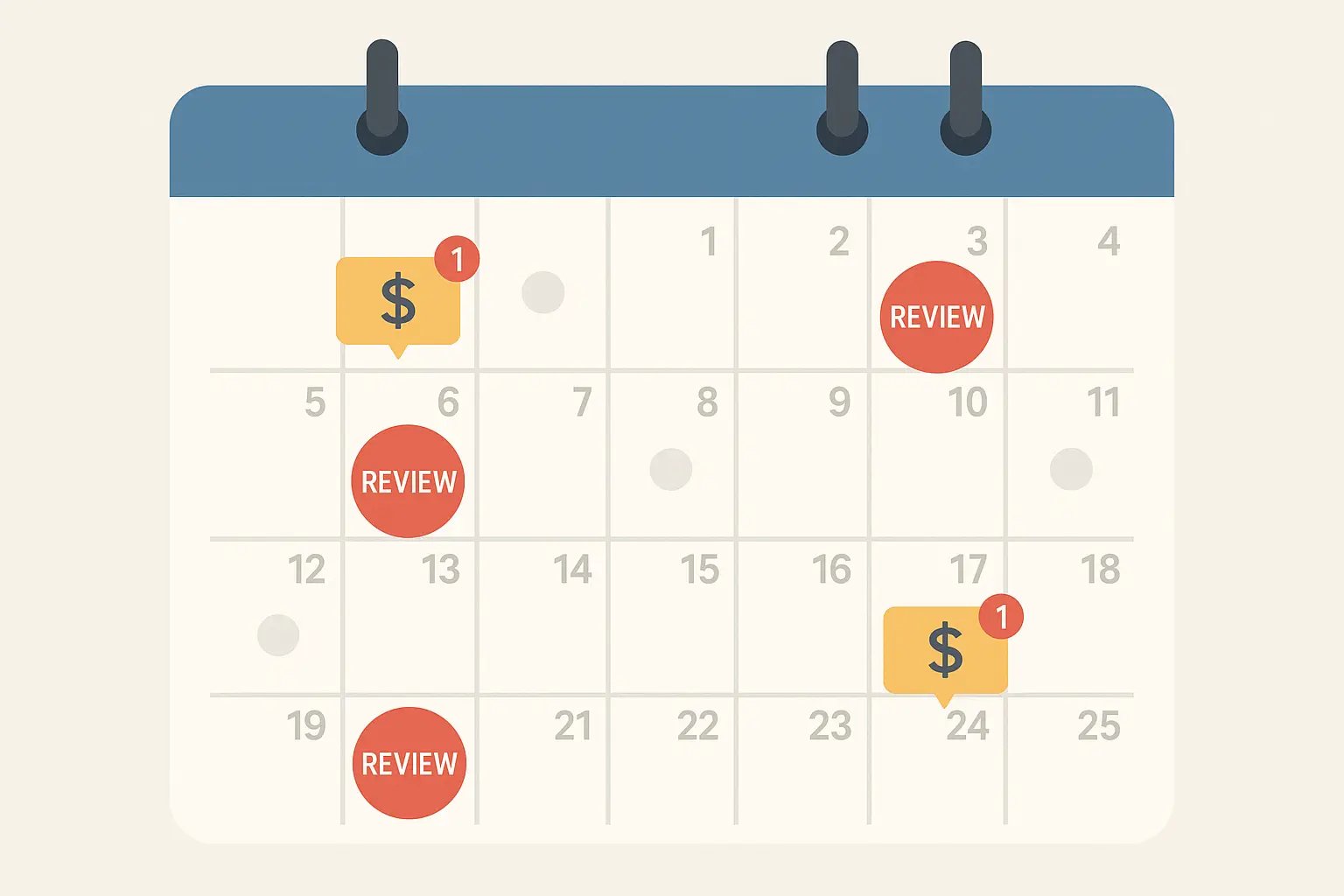
Advanced Revenue Optimization Techniques
Basic calculations tell you if a product is profitable. Advanced techniques show you how to make it way more profitable. This is where calculators become strategic weapons rather than simple tools.
Beyond basic calculations, sophisticated sellers use revenue calculator data to identify optimization opportunities, test pricing strategies, and make data-driven decisions that maximize profitability. These advanced techniques transform calculators from simple tools into strategic business intelligence systems.
Finding Your Profit Sweet Spot Through Smart Pricing
Pricing strategy isn’t about finding the highest price customers will pay or the lowest price that beats competitors. It’s about finding the price that maximizes your total profit, and most sellers get this completely wrong.
Revenue calculators enable sophisticated pricing analysis, helping sellers find the optimal price point that maximizes total profit rather than just unit profit or sales volume. Strategic pricing development requires understanding the relationship between price, volume, and total profitability.
The Total Profit Game (Not Just Margins)
Here’s what most sellers mess up – they optimize for profit margin percentage instead of total profit dollars. A 50% margin on 10 units generates way less profit than a 30% margin on 20 units.
Use your calculator to model different price points and their impact on total sales volume. Often, you’ll find that modest price increases barely affect sales but dramatically improve total profits.
Using calculator scenarios to test different pricing levels helps identify the optimal price point where slightly higher prices don’t significantly reduce sales volume but substantially increase total profit. This optimization focuses on total profit rather than just margin percentages.
According to Helium 10’s research, “most Amazon sales estimators are very rudimentary in their functionality and are therefore not entirely reliable”, which is exactly why you need sophisticated pricing analysis tools that go beyond basic BSR-to-sales conversions.
Strategic Competitive Positioning
Competitive pricing analysis shows you where you stand in the market and identifies opportunities to increase prices without meaningful sales impact.
I’ve found that many sellers can increase prices by 5-10% without meaningful sales impact, especially if they’re significantly underpriced compared to similar products. The key is knowing where that line is.
Advanced calculators integrate competitive pricing data to show how price changes affect market position and help identify opportunities to increase prices without losing market share. This analysis helps you make informed pricing decisions based on competitive dynamics.
Optimizing Your Entire Product Mix
Don’t just analyze products in isolation – look at your entire portfolio. Some products might be break-even individually but drive sales for your more profitable items.
Calculator data helps evaluate entire product portfolios, identifying high-performing products worthy of increased investment and underperforming products that may need optimization or elimination. This portfolio analysis guides resource allocation and strategic decision-making.
Understanding the Portfolio Effect
Your product portfolio has hidden relationships that individual product analysis completely misses. Low-margin products might drive traffic that converts on high-margin items.
Use calculator data to identify your profit drivers and support products. Invest heavily in promoting your most profitable items while using lower-margin products as traffic generators.
Analyzing how different products in a portfolio perform relative to each other allows sellers to allocate advertising budget and inventory investment toward their most profitable opportunities. This cross-product analysis reveals hidden relationships and optimization opportunities.
A home goods seller discovered through portfolio analysis that their low-margin storage bins (8% profit margin) drove 40% of customers to purchase higher-margin organization systems (35% profit margin). By maintaining competitive pricing on bins while optimizing the higher-margin products, they increased overall portfolio profitability by 28%.
When analyzing content performance and optimization opportunities, successful marketers use high-impact topic identification strategies similar to how Amazon sellers should identify their most profitable product opportunities through calculator analysis.
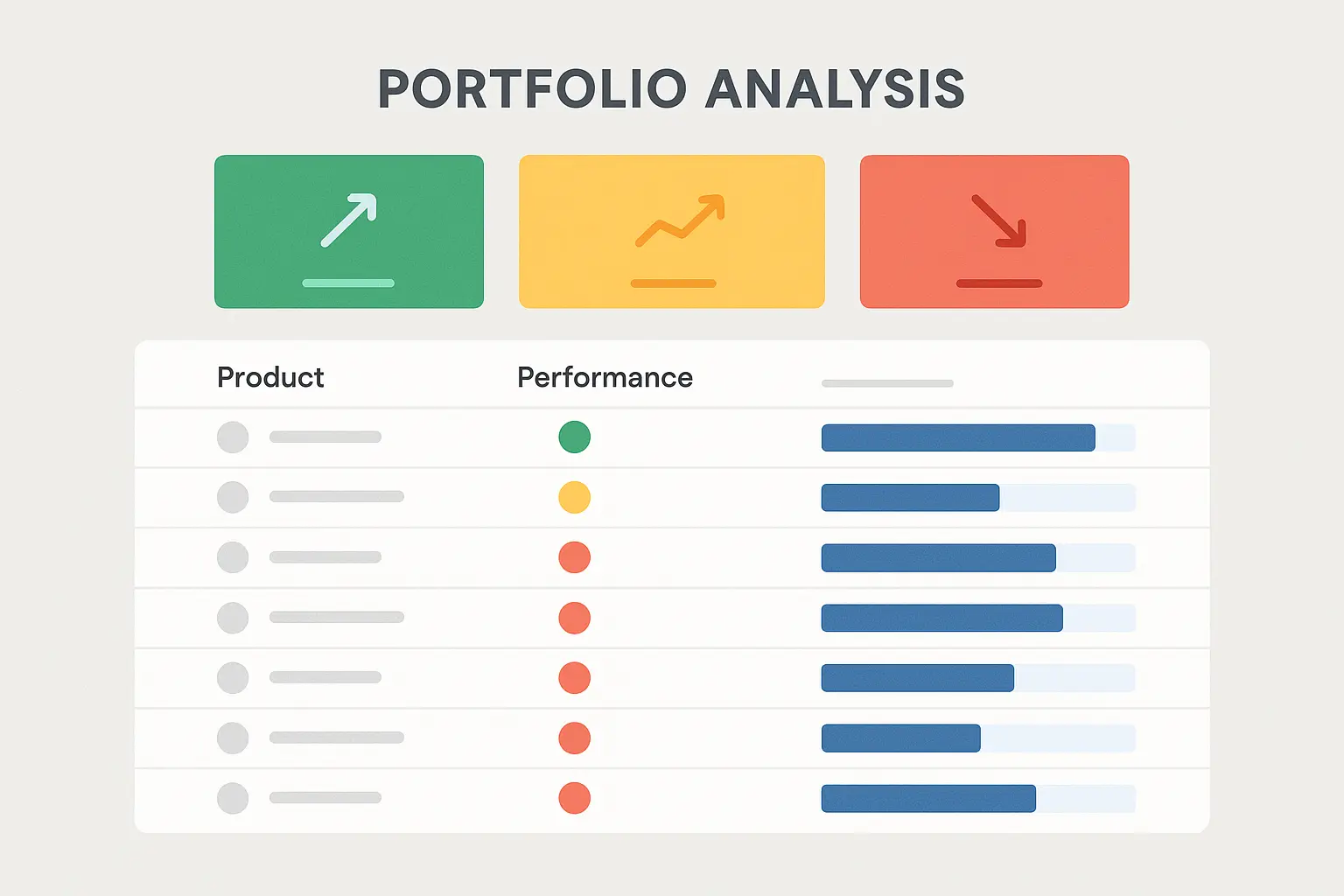
How The Marketing Agency Can Maximize Your Success
Revenue calculators show you the numbers, but improving those numbers requires strategic marketing. That’s where The Marketing Agency’s expertise becomes invaluable for Amazon sellers looking to turn calculator insights into actual profit growth.
The Marketing Agency’s data-driven approach and proprietary analytics systems complement Amazon revenue calculator strategies by improving the variables that make calculations more profitable. Our services directly impact advertising costs, sales velocity, and conversion rates – key inputs in revenue calculations.
Our PPC services ($750-$5,000/month) directly impact the advertising costs you input into revenue calculators while simultaneously increasing sales velocity. Through real-time campaign optimization, we ensure your advertising spend contributes positively to your calculator projections rather than eroding margins.
The Marketing Agency’s answer engine optimization strategies are particularly valuable for Amazon sellers, as AI-powered search is increasingly influencing product discovery both on and off Amazon. By optimizing your product listings and brand presence for large language models, we improve organic visibility that reduces your dependence on paid advertising – a key variable in revenue calculator profitability.
Our inbound marketing strategies ($500-$3,000/month) build brand authority and drive external traffic to your Amazon listings, improving conversion rates and sales velocity – two critical factors that make FBA fees more economical and improve your overall revenue calculator projections. When you can drive more sales through the same FBA infrastructure, your per-unit fulfillment costs become more favorable.
Most importantly, our attribution modeling expertise helps you understand which marketing investments generate the highest ROI on Amazon, allowing you to optimize the marketing cost variables in your revenue calculators for maximum profitability across your entire product portfolio.
Ready to turn your Amazon revenue calculator insights into actual profit growth? Contact The Marketing Agency today to discover how our data-driven marketing services can improve every variable in your profitability equations.
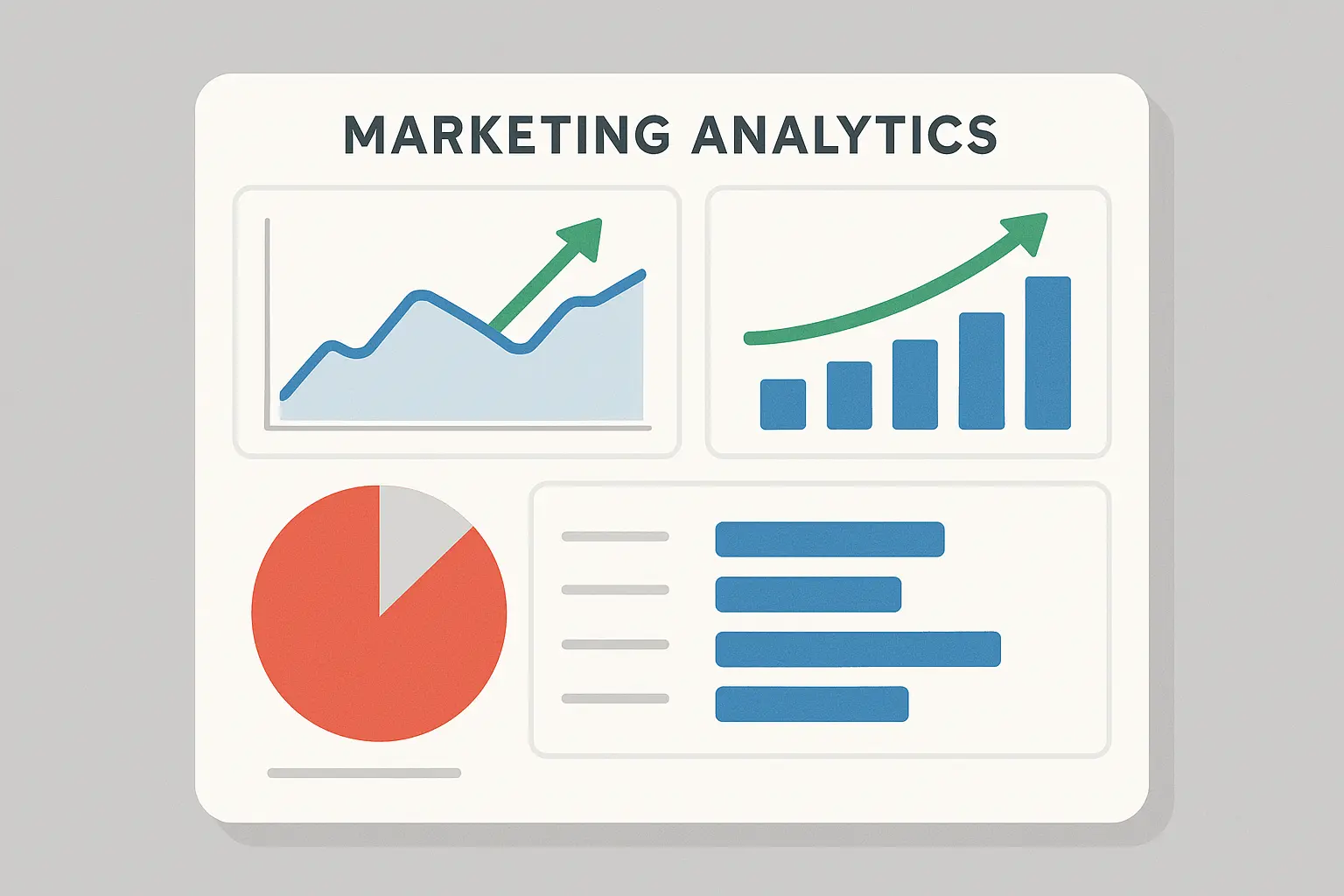
Final Thoughts
Look, I get it. Calculators aren’t sexy. Spreadsheets don’t give you that entrepreneur high. But you know what does? Actually making money instead of just thinking you are.
Amazon revenue calculators aren’t just number-crunching tools – they’re your roadmap to sustainable profitability in an increasingly competitive marketplace. The sellers who succeed understand that these calculators are only as valuable as the data you feed them and the actions you take based on their insights.
I’ve watched too many sellers treat calculators as one-time exercises rather than ongoing strategic tools. The real winners use them monthly, update their data religiously, and most importantly, act on what the numbers reveal. Whether that means adjusting prices, switching fulfillment methods, or eliminating unprofitable products, the calculator gives you the confidence to make these decisions based on data rather than guesswork.
Amazon revenue calculators are essential tools for e-commerce success, but their true value lies in how sellers implement and optimize their insights. Success requires accurate data input, regular updates, strategic interpretation of results, and the marketing expertise to improve the variables that drive profitability. The combination of sophisticated calculation tools and strategic marketing creates a powerful framework for Amazon business growth.
Just as businesses need comprehensive content optimization tools to maximize their digital marketing ROI, Amazon sellers require sophisticated calculators and strategic implementation to optimize their marketplace profitability.
Remember that every variable in your calculator represents an opportunity for optimization. Product costs can be negotiated, shipping methods can be optimized, and marketing spend can be made more efficient. The calculator shows you where you stand today – strategic marketing and operational improvements determine where you’ll be tomorrow.
Trust me on this one – the difference between sellers who make it and those who don’t often comes down to whether they actually know their numbers. Don’t be the seller who finds out they’ve been losing money for months because they never bothered to calculate their real costs. Your future self will thank you.
